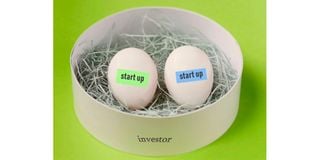Which kind of business attracts funding?

A growing business begins to immediately demand more funds to service its growing stocking needs, as well as cash to process raw inputs into finished goods and to finance sales made on credit. .
A few weeks ago, we discussed how to go about raising funds for your business, and highlighted the options available to young people starting a business from scratch. In the past, we have discussed the place of one’s own funds, as well as raising capital from friends and relatives, which is usually useful for achieving the milestones required to reach cash flow stage, where upon your business can now showcase its viability to venture capitalists.
A growing business begins to immediately demand more funds to service its growing stocking needs, as well as cash to process raw inputs into finished goods and to finance sales made on credit. This is called the working capital, and is used to finance the operating cycle of the business. The operating cycle is the heart of the business, while cash is the blood. If any cash problem occurs at this stage, death of the business is assured and fast.
Venture capital funders would usually give you money to finance the investment needed to support the operating cycle, and to a small extent some working capital. For example, if your business were a typical wholesale shop, the shop space, and may be extra space for storage and the investment in the infrastructure and a truck for transport would be the focus of venture capitalist. He would also provide minimal finance for the stocks which you buy and resell.
In Information Communication and Technology (ICT) based businesses such as JamboPay or ICT enabled businesses such as those that distribute food from restaurants, for example Glovo, venture capital financing would tend to improve the hardware needs, software improvement needs and access to higher quality skills in these areas.
Once the business has picked up a market share and can push its space, it must create its own credit worthiness by opening a bank account and creating its record of sales and outward payments. Simply put, begin to access its own working capital in the form of small stocking loans and overdraft.
There is a misconception that banks and microfinances fund people or businesses with big balances or savings in their accounts, but if you had that sitting around, you would not need funding. Credit worthiness is assessed based on your record of inflows, both the timing and amounts and the resulting average balance. This gives a good account about when you need money fund outflows as well as when you normally receive money to repay obligations such as a loan or an overdraft.
The operating cycle I mentioned earlier on has distinct length and can be clearly identified by your bankers. Its length and the quantity of cash produced in any one complete cycle is critical in determining how many cycles are required to produce enough money to repay the credit besides other obligations. Bankers use this information to arrive at your repayment instalment cycle and the nature of the need to arrive at your type of product. You therefore need not know up front whether you need a loan or an overdraft, and your banker is in a position to tell you this. You need to know your operating cycle, which refers to the business you do every day. Explain it clearly, especially where the cash gap is occurring as you do your business.
Finally, it is important to separate your personal transaction account from your business account. Move money periodically from the business to finance personal needs and maintain your records.
By Patrick Wameyo is a financial literacy coach at Financial Academy and Technologies, and an entrepreneurship coach at The Entrepreneurship Center EA. [email protected].





